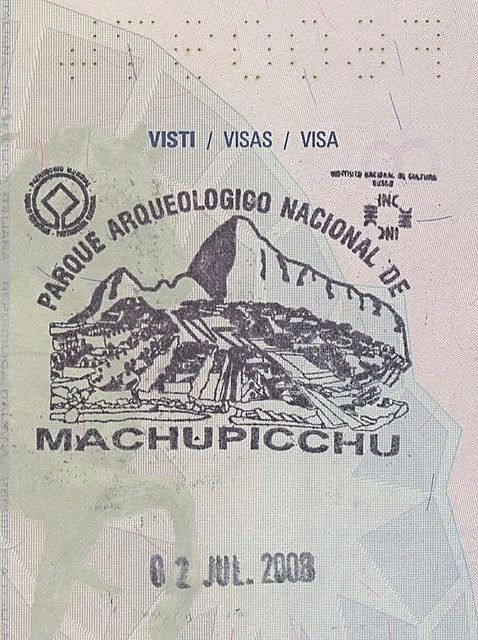Machu Picchu Travel Guide 2024
James Bustamante is Native to New York but born to Peruvian parents. He has been traveling throughout Latin America since early 2003 and finally made his home in Peru. James has made his way by eating and traveling through almost every country in Central and South America.
Last Updated on January 28, 2025 by James Bustamante
Check out our recently published expert Machu Picchu travel guide, where we go over all the little details necessary to make your hike in the Inca city an amazing one.
Where Can You Find Machu Picchu?
Before heading to Machu Picchu, you must reach the small town at the foot of the mountain. This town is known as Aguas Calientes, while some locals may call it Machu Picchu Pueblo.
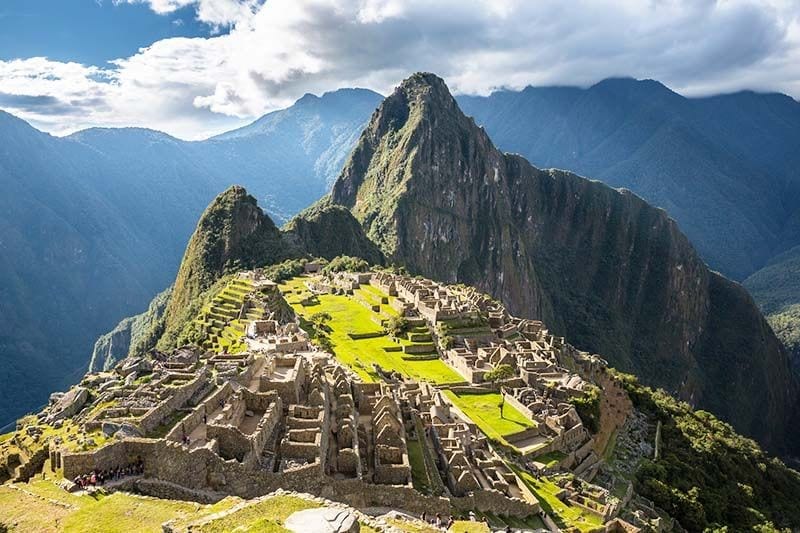
You won’t be able to reach it through conventional means as there is no direct road to Aguas Calientes. Several methods are available to get to the famous village, including trains and hiking routes like the Salkantay trek.
Upon arrival, and after a quick rest, you can go up from Aguas Calientes to reach Machu Picchu at the top of the mountain. You’ll need to include your transportation to Aguas Calientes on your Machu Picchu
reservations. The shuttle service up the mountain is a quick 20-minute drive up one of the most beautiful sceneries you’ll gaze on.
Once you reach Aguas Calientes, how you get to the Inca citadel depends on personal preference. The most common method is to book a seat on the shuttle that takes you up the mountain. The other option is to hike from Aguas Calientes to Machu Picchu, which takes around 2.5 hours to complete.
Travelers Note: Hiking up the mountain from Aguas Calientes to Machu Picchu is only available on certain dates, so ask if this short trek is available.
Machu Picchu Tickets
To enter Machu Picchu, You will need an entrance ticket. Machu Picchu permits can be purchased online in advance or from various ticket offices in Cusco. Entrance tickets will be included in your package when booking with a travel operator.
Remember that tickets are usually in short supply, so it is imperative to have your entrance tickets to Machu Picchu booked well before you are in Peru for your trip.
There are around 5900 tickets available each day between the various forms of entering Machu Picchu. This might sound like plenty to go around, but it is definitely not the case. Not all tickets are the same, and some only allow travelers to visit certain areas of Machu Picchu. If you want to have the best experience possible, make sure to book 2-3 months in advance.
Tickets to additional hikes like Huayna Picchu or Machu Picchu Montana also have daily limits. Both of these hikes, along with Huchuy Picchu, have around 400 available permits each day; these tend to book 90-120 days ahead of the time of the trip.
Remember that these tickets can’t be purchased at the entrance gate to Machu Picchu and can sell out in advance, which is why we recommend getting your Machu Picchu tickets as soon as you have your travel dates.
Huayna Picchu Mountain
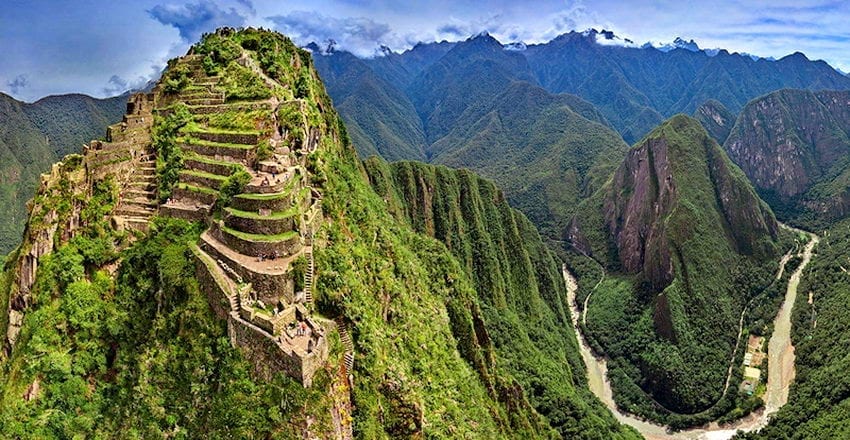
The next part of our Machu Picchu guide goes over the most popular mountain peak in the area. The most sought-after hike within the Machu Picchu complex is the Huayna Picchu mountain peak. Huayna Picchu is a very tall mountain peak lined with cobblestone stairs that ascend toward the top at 9,000 feet (2,720 meters) above sea level.
The Huayna Picchu (Wayna Picchu) hike is not for the faint of heart. Some call it the stairs of death due to the verticality involved in getting to the very top of the mountain.
Most travelers take around 45 minutes to 1 hour and 30 minutes to reach the top of the mountain, depending on their fitness level.
The views from the top are truly out of this world, with a backdrop consisting of ancient temples and lush vegetation with Machu Picchu at its center.
Machu Picchu Mountain (Montaña Machu Picchu)
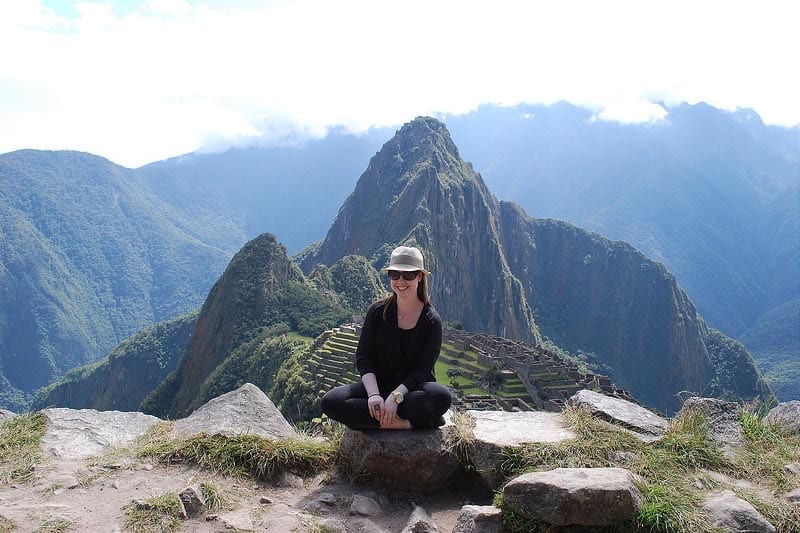
Another of the amazing peaks you can include as part of your Machu Picchu hike would be the Machu Picchu Montana hike, which you’ll find at the southwest corner of the Inca citadel.
The Machu Picchu Montana hike is a bit longer than Huayna Picchu, but it is also less crowded; it is not as vertical but offers some amazing views of the surrounding area. Many hikers don’t know this, but the Mount Machu Picchu trek is higher than Huayna Picchu. Reaching the top can take 1 hour and 30 minutes to 2 hours.
The differences lie in what your preferences would be. Huayna Picchu offers a more straightforward vertical hike, while Machu Picchu Montana is more of a winding road around the mountain leading to its peak. Once at the top of the mountain, you can look down and see the Inca city of Machu Picchu and the Wayna Picchu mountain as well.
Machu Picchu Trekking Options
For the more adventurous travelers, reaching Machu Picchu on a multiday hike is the perfect formula for an exciting trip to the Andes. There are several routes hikers can take; however, three popular hikes stand out.
The Classic Inca Trail

The classic 4-day Inca trek is the most popular hike in South America and one of the most popular in the world. The Inca Trail offers four days of trekking and camping along cobblestone roads while you visit Inca buildings along the way. This thrilling hike ends with the stunning beauty of the Machu Picchu national park and a guided tour + exploration.
This Machu Picchu Hike is on every traveler’s bucket list, usually along the top. We recommend reserving your spots at least 3 to 4 months in advance.
If you plan on taking this hike during the dry season, the time frame changes to reserving your permits up to 6-7 months in advance. In some cases, groups must reserve the hike up to a year in advance to secure enough permits.
The most popular months are May, June, and July, so if you have a big group, make sure to secure your permits before doing anything else.
The Inca Trail in February
Note that the official Inca Trail is closed for upkeep and maintenance in February, this is also during the peak of the rainy season.
Inca Trail Permits and Limits
Due to maintenance activities, mostly because of erosion, the Peruvian government limits the number of spots for the Inca Trail to about 500 per day.
However, about 150 to 180 of those spots are go-to guides, porters, and maintenance staff. Try to reserve as far in advance as possible.
Prices for the Inca Trail vary greatly. Make sure to check it out here for the best information and pricing.
The Salkantay Trek
This one is for trekkers with a bit more experience. This 4 or 5-day trek takes you through the Cordillera Vilcabamba where you will uncover the sister route to the Classic Inca Trail to Machu Picchu.
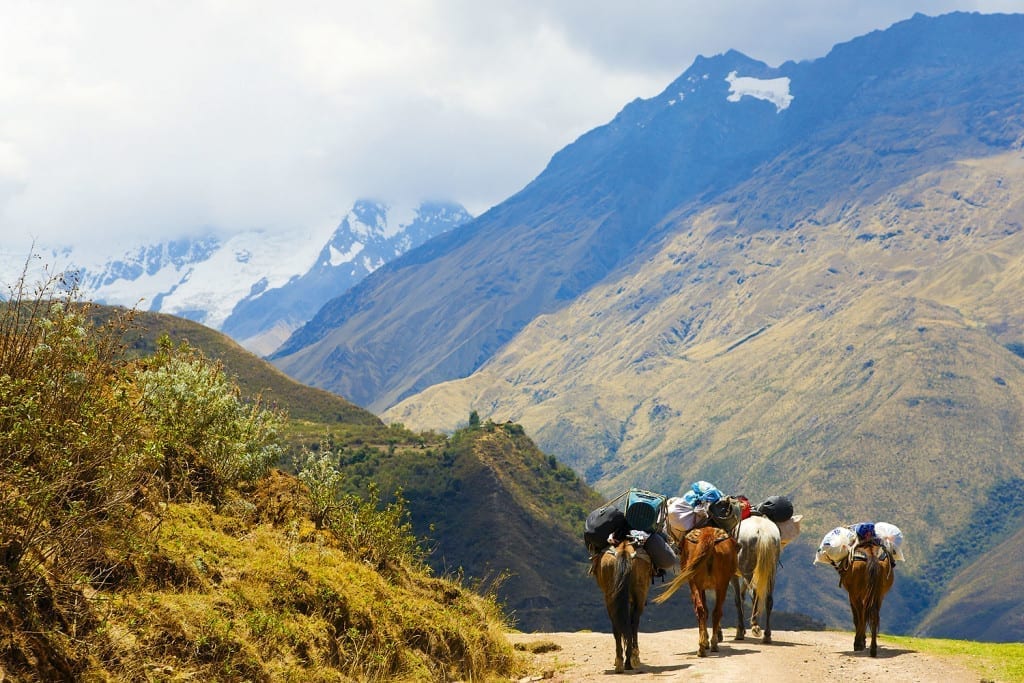
The Salkantay trek is a hiking option for hikers looking for a more challenging experience. This hike is typically a five-day challenge, but upon request, the Salkantay can be tailored to become a four or three-day hike.
Often called the sister route to the classic Inca Trail, The Salkantay route takes you through the Cordillera Vilcabamba. Remember, the Inca took several routes to reach Machu Picchu, and the Salkantay was just another path that led to the Incan city.
Its name originated due to the route passing by the Salkantay Peak, the second largest in the Vilcabamba Valley, and the Salkantay Pass. Trekkers will traverse both before reaching the cloud forests below.
The Salkantay is one of the most visually appealing hikes in South America. During the hike, travelers will see gorgeous views of the glaciers and the extensive river valleys covering this incredible landscape.
The Salkantay Trek was even named one of the world’s top treks by the famous National Geographic Magazine. The Salkantay is available year-round and has a much higher hiker limit than the classic four-day Inca Trail. As with the Classic Inca Trail, prices vary according to group size and a few extras. Check out more information about the Salkantay Trek here!
The 2-Day Inca Trail
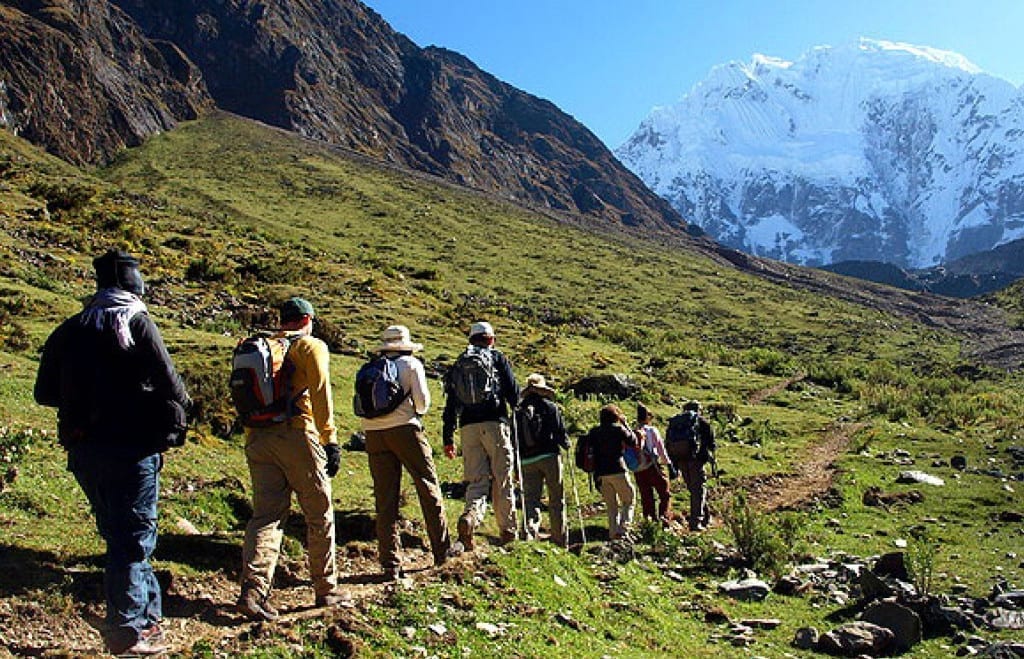
Often, travelers might be looking for shorter hiking options. The two-day Inca Trail is sometimes called the “Express Inca Trail” since you only need a couple of days to complete it.
The two-day hike takes some of the best from the classic four-day hike and packs it into a shorter yet off-the-beaten-path experience.
The hike heads into the Andean wilderness and passes by authentic Andean communities surrounded by stunning mountains, lakes, and valleys.
After a full day of hiking, you’ll reach Aguas Calientes town, where you will spend the night. The following morning, the group heads up to tour Machu Picchu.
Like the Salkantay, the two-day Inca Trail is available year-round and usually has spots available a few weeks before your trip. For more information, check it out here!
IMPORTANT NOTE: If you’re still deciding how to get to Cusco, you can contact us at Journey Machu Picchu for further information.
Trekking through the Andes can be amazing, but we know that many travelers might prefer a more leisurely trip. The following are some alternatives to reach Machu Picchu that don’t involve camping and hiking through the Andes:
Machu Picchu by Train
Going to Machu Picchu by train is a more leisurely experience than camping and hiking to the Inca citadel. In fact, most travelers prefer the train option since it is more customizable and availability is not a problem on mostly not an issue. There are various train options, departure schedules, and Peru package options that one can customize into a Machu Picchu by train experience.
2-Day Train Itinerary
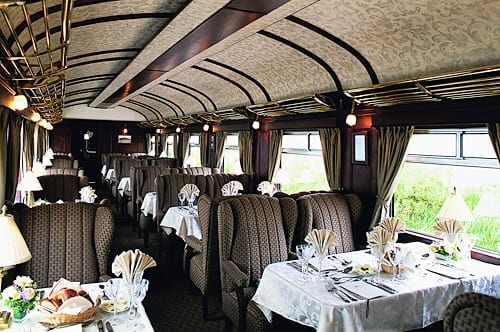
The most common way non-trekking travelers get to Machu Picchu is by train. The two-day Machu Picchu tour is one of the most popular package experiences. It involves riding the train, an overnight stay in Aguas Calientes, and a Machu Picchu tour.
Travelers will board a train mid-morning and travel to Aguas Calientes down the Urubamba Valley. Once you arrive in Aguas Calientes, you’ll be guided to your accommodations, where you’ll spend the night. Spending the afternoon exploring the small town and visiting the hot springs is customary.
The following morning you’ll head up to Machu Picchu on the bus service that was previously arranged. The trip takes around 20 minutes, and you’ll arrive at the complex’s main entrance. You’ll then enter Machu Picchu for a guided tour by an expert guide. In the afternoon you’ll return to Cusco on the train.
1 Day Train Ride to Machu Picchu Express Tour
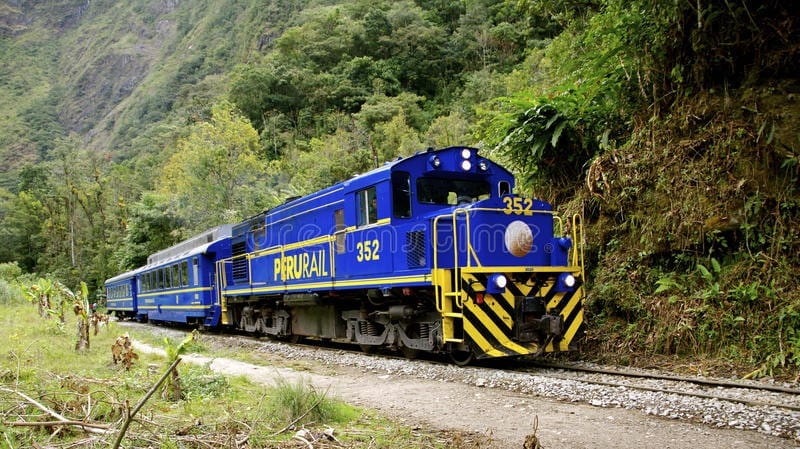
Some travelers prefer to skip the overnight stay in Aguas Calientes and have a full Machu Picchu day trip instead. The express tour is the shortest and quickest route to the Inca city. It starts by leaving Cusco at 4:30 am to catch the first train out of Ollantaytambo towards Aguas Calientes. Once you arrive in the small town, you’ll be taken to the bus station to board the shuttle and reach Machu Picchu that very morning.
After the guided tour, you’ll return to Aguas Calientes and board the 3:30 train to Cusco. We’ll arrive back in the Inca city by 6:30 pm.
Are There Different Trains That Go To Machu Picchu?
There are three types of trains that you can take via PeruRail, the biggest train company with the right to go to Machu Picchu. The three lines are the Expedition, the Vistadome, and the Hiram Bingham.
We recommend taking the Vistadome to get the best views without breaking the bank. The full itinerary for this trip is the Machu Picchu Express Tour.
- PeruRail Expedition:
- The Expedition train is the most economical option for reaching Machu Picchu.
- It offers comfortable seating and panoramic windows, allowing passengers to enjoy the scenic beauty of the journey.
- The train provides onboard snack and beverage service for purchase, including both hot and cold options.
- The Expedition train is a practical choice for those seeking comfortable and affordable transportation to Machu Picchu.
- PeruRail Vistadome:
- The Vistadome train offers an upgraded experience with larger panoramic windows, providing enhanced views of the surrounding landscapes.
- Passengers can enjoy complimentary snacks and hot or cold beverages during the journey.
- The Vistadome train also offers onboard entertainment, including traditional music and dance performances, adding to the overall experience.
- This train option is ideal for travelers who want a more immersive and scenic journey to Machu Picchu.
- PeruRail Hiram Bingham:
- The Hiram Bingham train is a luxury, high-end option for travelers seeking an exceptional and exclusive experience.
- It offers elegant, 1920s-style carriages with polished wood interiors, plush seating, and exquisite details.
- Passengers on the Hiram Bingham train are treated to gourmet meals prepared by onboard chefs and served in beautifully decorated dining cars.
- The train features an observation car with a bar, allowing passengers to relish the stunning Andean landscapes while sipping refreshing beverages.
- Live entertainment, such as traditional Peruvian music and dance performances, adds to the sophisticated ambiance.
- The Hiram Bingham train provides an exceptional and memorable journey to Machu Picchu for those who value luxury and exclusivity.
When choosing between these options, consider your budget, desired level of comfort, and the type of experience you’re seeking. All three trains offer different amenities and cater to various preferences, ensuring there’s an option for every traveler to make their journey to Machu Picchu special.
Bus to Machu Picchu
2-Day Bus/Walk
If trains don’t suit your style, you can always take a special bus route that extends from Cusco all the way to the “Planta Hidroelectrica” or a hydroelectric plant near Aguas Calientes.
This is the last train stop before reaching Aguas Calientes via Santa Maria.

The bus route doesn’t go directly to Machu Picchu. It actually leads to a checkpoint a few miles outside of Aguas Calientes. This trip can be hectic since you will travel through dirt roads, and there is also plenty of walking.
Once your reach this Santa Maria, you will have to walk for about 2-3 more hours, following the train tracks, until you reach Aguas Calientes.
You will arrive later in the day, so we advise spending the night there to rest up.
The following morning you can take the bus or trek up the mountain to the Machu Picchu entrance gate and start your tour of the ancient citadel.
After exploring the area, you return via a long trek back to Hidroelectica and then a shuttle back to Cusco.
We don’t recommend this method of reaching Machu Picchu as it can be dangerous due to dirt roads and walking along train tracks.
Machu Picchu Passport Stamp
One of the best souvenirs of your trip to Machu Picchu is the passport stamp you can receive upon entering through the main gate. Best of all, getting it costs S/.1 (around 35 cents). There might be a small line waiting to have their passport stamped, so we recommend getting it once your Machu Picchu tour has culminated.
Machu Picchu Packing List
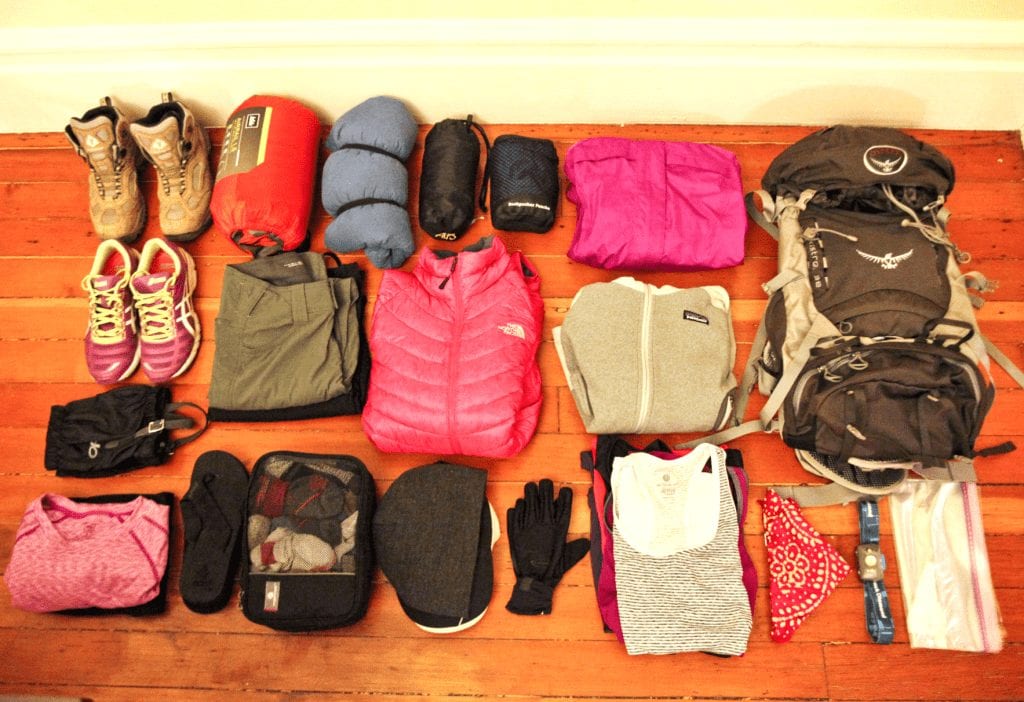
- The most important item to bring is your passport as you can’t enter without it.
- Don’t forget to bring your tickets to Machu Picchu and Machu Picchu / Huayna Picchu Mountain, you have no idea how many people forget them back at their hotel.
- Make sure to bring some extra money for lunch and souvenirs as well as if you think you’ll need to use the bathroom.
- A camera (selfie stick if needed).
- Good walking or trekking shoes.
- Bottled water.
- Some snacks.
- Sunscreen and/or a small foldable umbrella depending on the weather.
What Not to Bring Into Machu Picchu
- Don’t take tripods, as they are not allowed at the historic site.
- Do not take professional filming gear unless you requested the necessary permit provided by the local authorities. This includes drones.
- Walking sticks are not allowed unless the person needs them due to a physical issue.
- Umbrellas are not allowed in Machu Picchu because they might fly off. If it rains, bring a rain poncho.
- Don’t bring food to Machu Picchu.
- Don’t bring plastic bottles to Machu Picchu.
Machu Picchu Safety Tips
- Whether you travel alone or with a group of friends/family, make sure you stay with your guide at all times.
- Make sure to stay within the railings and clearly laid out boundary markers. Machu Picchu is on top of a mountain, and it is a long way down.
- Like all touristic sites, keep an eye on your valuable items.
Frequently Asked Questions: Machu Picchu Guide
You can go by shuttle bus, train, or even walk there if you’re on a budget. You can also make your way on the Classic Inca Trail trek, the Salkantay Trek, or the 2-Day Inca Trail Trek.
It’s one of the ancient wonders of the world and the most incredible Inca ruins in all of South America. It was named a World Cultural and Natural Heritage by UNESCO in 1983 and is one of the most sought-after tourist destinations in the World.
It is made up of a series of perfectly carved stone temples that are terraced throughout the mountain; archeologists are still unsure how the Inca were able to create such elaborate stone structures without the use of modern-day tools.
Machu Picchu is at about 2,430 meters or about 8,000 ft. above sea level. This is why we at Journey Machu Picchu always recommend you spend a few days getting used to the altitude before going on any tour around Cusco.
Tickets are sold on the official government website, can be paid with credit or debit cards, and are NOT sold at the entrance gate. We at Journey Machu Picchu can handle any and all reservations needed for your trip to Peru and Machu Picchu.
You should always try to go during the dry season. The best months to go are usually May and June.
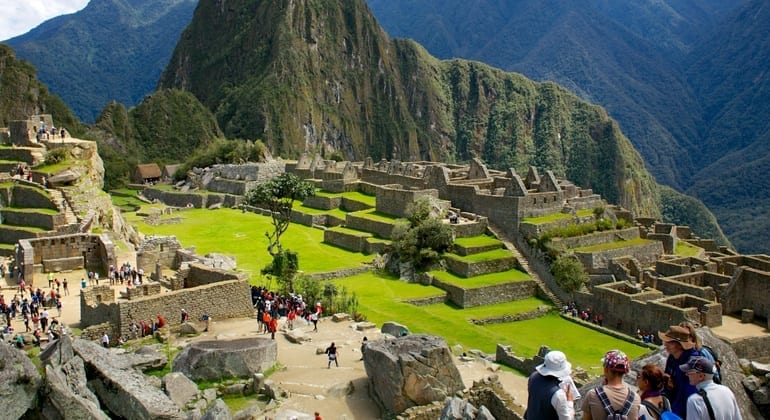
That pretty much covers all the basic information you need to know when traveling to Machu Picchu. Want to know more about Peru, Cusco, and Machu Picchu Travel? Make sure to follow us on TripAdvisor, Instagram, and Facebook.


